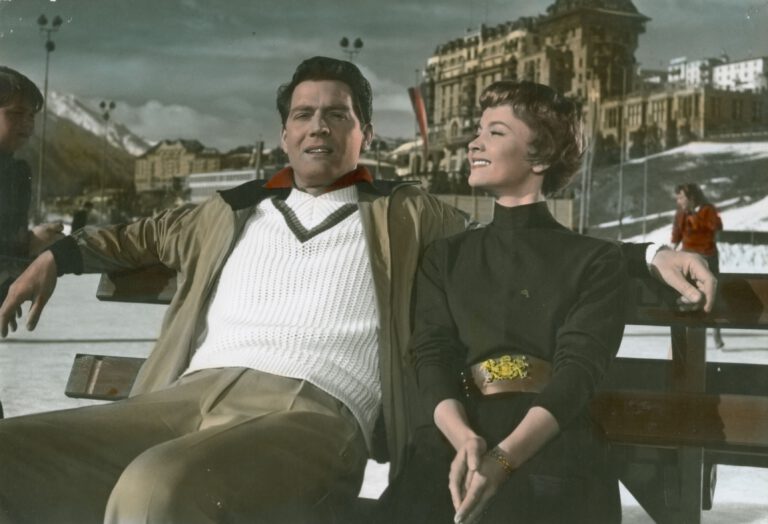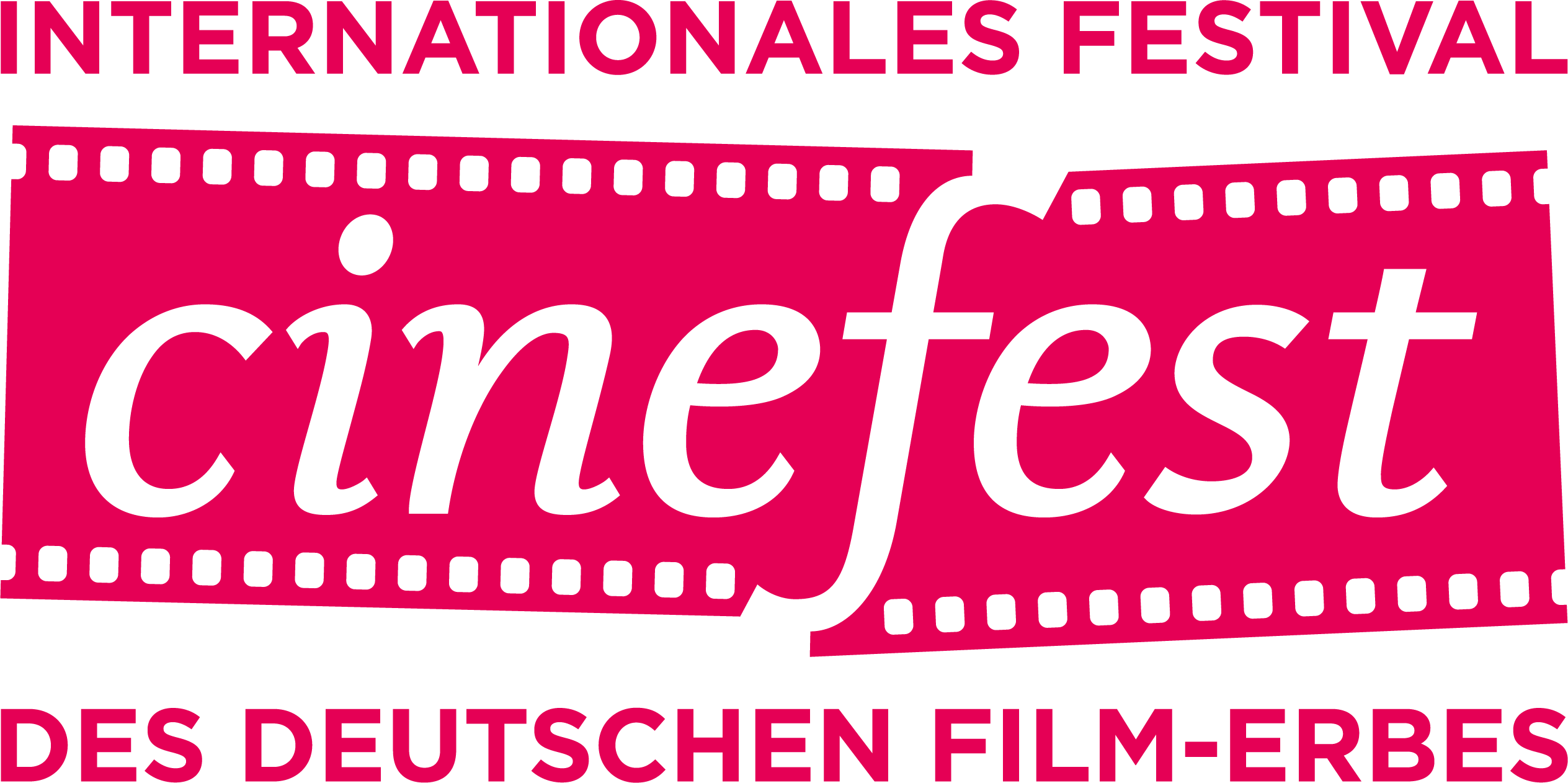XXI. cinefest - International Festival of German Film Heritage
More than Tell and Heidi
German-Swiss Film Relations
15 - 24 November 2024
at cinema Metropolis (Kleine Theaterstr. 10, 20354 Hamburg)

Source: DFF - Deutsches Filminstitut & Filmmuseum
cinefest 2024 will explore the various relationships between (German-)Swiss and German film.
Over the decades, numerous literary classics e have repeatedly provided templates for adaptations in various countries, e.g. Gottfried Keller’s »Kleider machen Leute« (1921, Hans Steinhoff; 1941, Helmut Käutner; 1963, Paul Verhoeven) or »Romeo und Julia auf dem Dorfe« (1941, Hans Trommer; 1967, Willi Schmidt; 1983, Siegfried Kühn).
Early on, there were cross-border co-productions in silent films, such as DCERY EVINY / EVAS TÖCHTER / ANNY … FILLE D’ÈVE (1927/28, CS/GER/CH) with the popular Czech duo Karel Lamač and Anny Ondra.
The mountain film genre , which was particularly popular in the 1920s/30s, offered itself – if only for geographical reasons – for collaboration: DER KAMPF UMS MATTERHORN, 1928, Mario Bonnard, Nunzio Malasomma, KOL: Arnold Fanck; DIE HERRGOTTSGRENADIERE / DER GOLDENE GLETSCHER, 1932, Anton Kutter.
In the early 1930s, the introduction of the sound film and the associated increased cost of filmmaking forced producers to initiate international co-productions, opening up a larger sales area by combining various German-speaking markets. When the production of the Brecht film KUHLE WAMPE ran into financial problems in Germany in 1931/32, Polish-born Lazar Wechsler, who had founded the Praesens-Film in Zurich, financially ensured its completion. At the same time – and at the other end of the political spectrum – he produced TANNENBERG. EIN DOKUMENTARISCHER FILM ÜBER DIE SCHLACHT VON TANNENBERG, which was however not distributed in Switzerland. Wechsler’s company Praesens-Film is celebrating its 100th anniversary in 2024 and will be represented in the programme with many films that are an important part of Swiss film history.
From 1931 to 1935, the Swiss Scotoni family-controlled Terra Film in Berlin, was one of the most important German production companies. In this context – under the artistic direction of Nazi writer Hanns Johst – one of the numerous film adaptations of Tell was made in this context, with Conrad Veidt as Gessler and Emmy Sonnemann (later: Göring) as Hedwig Tell.
During the production of these films, (Jewish) emigrants were prohibited from taking up gainful employment. However, numerous filmmakers came from Germany and continued their careers in Switzerland at the theater (Schauspielhaus Zürich) and thereby were also able to be successful in film, including directors such as Leopold Lindtberg (FÜSILIER WIPF, 1938; MATTO REGIERT, 1946/47) or actors such as Heinrich Gretler and Leonard Steckel.
In view of political developments on the other side of the border, some filmmakers in Switzerland tried to create a homeland positioning against Nazi Germany by emphasizing, for example, stories of vigilant neutrality in the First World War or the history of the Swiss Confederation: GILBERTE DE COURGENAY. EIN FILM AUS DER GRENZBESETZUNG 1914-1918 (1941, Franz Schnyder; KOL: Hermann Haller), LANDAMMANN STAUFFACHER (1941, Leopold Lindtberg).
It was not until after the war that a younger generation of filmmakers dealt with the real demarcations against refugees with the motto »The boat is full« –, anti-Semitic and right-wing extremist tendencies in Swiss political circles, as well as the attempts to oppose them were explored. Examples of this are feature films such as KONFRONTATION – DAS ATTENTAT VON DAVOS (1974, Rolf Lyssy), DAS BOOT IST VOLL (1980/81, Markus Imhoof) and GLUT (1983, Thomas Koerfer) as well as in documentaries such as DIE ERSCHIESSUNG DES LANDESVERRÄTERS ERNST S. (1975/76, Dindo), ES IST KALT IN BRANDENBURG – HITLER TÖTEN (1978-80, Villi Hermann, Niklaus Meienberg, Hans Stürm), and later GRÜNINGERS FALL (1997, Dindo).
After the war, well-known Swiss artists such as Bernhard Wicki, Maximilian Schell, Paul Hubschmid and Liselotte Pulver – often in German-Swiss co-productions – were mainly active in Germany, for example in the Hamburg production DIE ZÜRCHER VERLOBUNG (1956/57, Helmut Käutner).
Writers such as Friedrich Dürrenmatt, Lukas Hartmann and Max Frisch provide templates for film adaptations, many of which are international: ES GESCHAH AM HELLICHTEN TAG / EL CEBO (1958, Ladislao Vajda), PESTALOZZIS BERG (1988/89, Peter von Gunten), HOMO FABER / THE VOYAGER (1990, Volker Schlöndorff), JUSTIZ (1993, Hans W. Geissendörfer).
In the 1960s/70s, a “new wave” also developed in Western Switzerland parallel to the Young German Cinema and often with a mix of personnel and – through the involvement of German and Swiss TV stations, for example with DER TOD DES FLOHZIRKUSDIREKTORS (1972/73, Thomas Koerfer), SCHATTEN DER ENGEL (1975, Daniel Schmid), DIE SCHWEIZERMACHER (1978, Rolf Lyssy) with the actors Emil Steinberger and Walo Lüönd, who were also popular in Germany.
There were even some connections with the GDR: in 1978 Egon Günther filmed URSULA; In 1983, Siegfried Kühn filmed ROMEO UND JULIA AUF DEM DORFE, both of which were provided by the »bourgeois realist« Gottfried Keller.
Catalog cinefest 2024
At cinefest, an extensive catalogue with reviews and materials on the films and themes of the festival will be published again.
Integral part of the festival is the 37th International Film History Conference.It will take place November 21-23 in the University Guesthouse of Hamburg.
Discussion forums on current and archival topics accompany cinefest.


